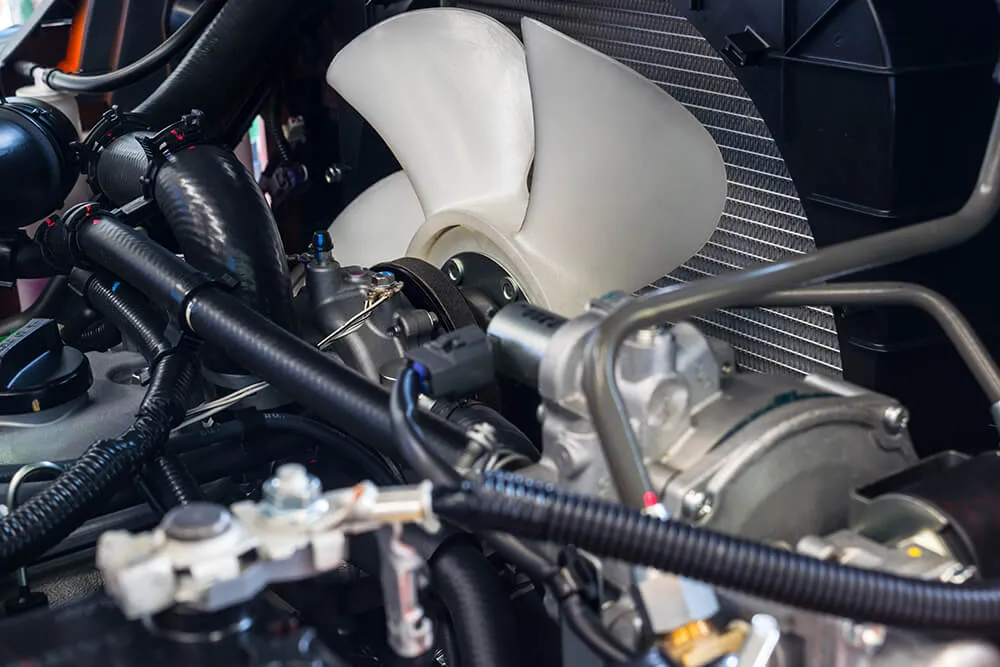Hot climates pose unique challenges to a vehicle’s cooling system, as high temperatures can strain the system and increase the risk of overheating. Proper maintenance and preventive measures are crucial to ensure the optimal performance and longevity of your vehicle’s cooling system in hot climates.
Check Coolant Levels Regularly:
Regularly monitor your vehicle’s coolant levels, especially in hot climates. Coolant helps regulate engine temperature and prevent overheating. Low coolant levels can lead to inadequate cooling and an increased risk of engine damage. Check the coolant levels when the engine is cool, and top off (as needed) using the recommended coolant type and mixing ratio specified by the manufacturer.
Use the Correct Coolant for Hot Climates:
In hot climates, it’s essential to use coolant specifically formulated for high-temperature environments. High-quality coolants designed for hot climates have higher boiling points and better heat transfer properties. Consult your vehicle’s owner manual or a professional mechanic to determine the recommended coolant for hot climates.
Inspect Hoses and Belts:
Inspect the cooling system hoses and belts regularly for signs of wear, cracks, or leaks. Hot climates can accelerate the deterioration of rubber components. Replace any damaged or worn-out hoses and belts promptly to prevent coolant leaks or system failures. Consider using heat-resistant hoses in extreme heat conditions to enhance durability and prevent premature failure.
Clean the Radiator and Condenser:
Regularly clean the radiator and condenser to remove dirt, debris, and bugs that can obstruct airflow. Hot climates often result in increased dust and debris accumulation, compromising the cooling system’s efficiency. Use a soft brush or compressed air to clean the cooling fins and ensure proper airflow. Be gentle to avoid damaging delicate components.
Check the Radiator Cap:
A faulty or worn-out radiator cap can lead to coolant loss, reduced system pressure, and increased risk of overheating. Inspect the radiator cap regularly and ensure it seals properly. Replace the radiator cap if it shows signs of wear or fails to maintain the recommended pressure. A functioning radiator cap helps maintain the proper coolant circulation and temperature regulation.
Monitor Engine Temperature:
Pay attention to your vehicle’s temperature gauge or warning lights to monitor engine temperature closely. In hot climates, it’s crucial to be proactive in detecting early signs of overheating. If you notice the temperature gauge rising above the normal range or warning lights illuminating, pull over to a safe location, turn off the engine, and allow it to cool down. Seek professional assistance to diagnose and address any cooling system problems.
Use Auxiliary Cooling Aids:
In extreme heat conditions or when towing heavy loads, consider using auxiliary cooling aids to support the cooling system. These aids may include electric fans, transmission coolers, or engine oil coolers. Auxiliary cooling aids help dissipate excess heat and relieve the strain on the cooling system, enhancing its efficiency and preventing overheating.
Schedule Regular Professional Inspections:
Regular professional inspections and maintenance are essential in hot climates to ensure the health of your vehicle’s cooling system. Certified mechanics can perform comprehensive checks, identify potential issues, and address them before they escalate. Regular inspections help detect early signs of cooling system problems and allow for timely maintenance and repairs.
Preventing cooling system problems in hot climates requires proactive maintenance and adherence to specific guidelines. By taking these preventive measures, you’ll enjoy a cool and reliable driving experience in hot climates.

